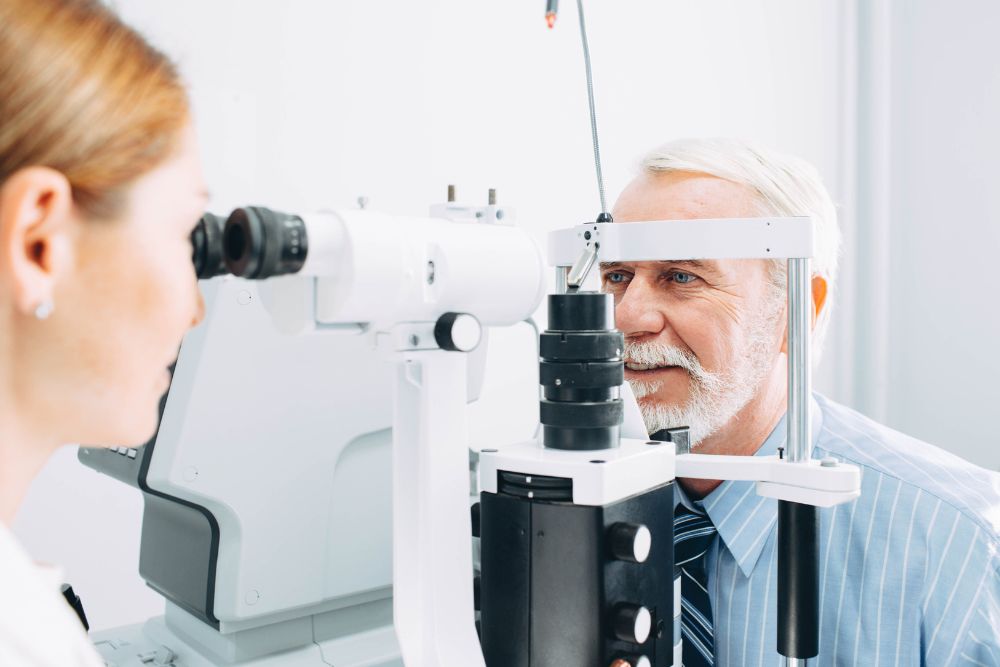Supreme Sight: Interesting Animal Visual Adaptations and What They Can Teach Us About Human Eyes
Our virtual CE webinar event on December 7, 2021, was a little different from most of the other presentations we have given throughout the year. Instead of focusing on unique cases and treatment modalities, this event was all about animal visual adaptations. The entire event was presented by Dr. James Major.
Dr. Major introduced the program by talking about his experience studying and treating bird eyes. Having been an avid bird-watching enthusiast since childhood, Dr. Major originally studied ornithology before changing course and going to medical school. In 2008, when he was a resident at the Bascom Palmer Eye Institute at the University of Miami, he approached the head of the raptor rehab program at the Miami Museum of Science (now called the Frost Museum of Science) and suggested using a spectral-domain OCT machine to take a look at the retinas of birds. The rehab program brought in a broad-winged hawk that was blind in one eye, as well as a barn owl, and Dr. Major was able to capture the first-ever in vivo images of raptor retinas.
Color Vision Mutations
The first part of Dr. Major’s presentation was about interesting visual adaptations in general, kicking things off with an overview of color vision in humans. He explained how normal color vision is defined as being trichromatic, meaning that cones in the retina pick up blue, green, and red. Dr. Major then discussed tetrachromatic color vision, which is an extremely rare genetic mutation in which a person has an extra “orange” cone that allows them to see more colors than those with normal color vision. While most people see five colors in the rainbow and can differentiate one million unique colors, tetrachromatic individuals can see ten colors in the rainbow and differentiate one hundred million colors.
Unique Fish Eye Adaptations
Next, Dr. Major reviewed some interesting visual adaptations in fish. He talked quite a bit about marlins, which are large predatory fish that spend a lot of time swimming and hunting in the cold depths of the deep ocean. To prevent muscular and neurological sluggishness while submerged in these cold depths, marlins have enlargened extraocular muscles (EOM). The marlin’s eyes do not move but instead, generate heat which helps to keep the marlin’s brain warm.
Dr. Major then talked about another fish with stationary EOMs called stargazers, which sit motionless at the bottom of shallow waters buried in the sand. Their eyes are fixed at the top of their heads which allows them to see prey as it swims by. The stargazer’s EOMs are even more unique because they act as an electric organ that can stun predators by delivering 50 bolts of electricity.
Dr. Major then discussed the anableps fish, also known as the four-eyed fish, which is a small fish that spends most of its time at the water’s surface. The unique thing about the four-eyed fish is that their eyes are both above the surface of the water and below, so they can see both underwater and the air at the same time, which is made possible by their iris being split in half by a pigmented band.
Eyeshine in Animals
Dr. Major briefly discussed eyeshine in nocturnal animals. Eyeshine occurs when light enters the eye and reflects off of the retina, which gives the appearance of a glow emanating from the eye. Nocturnal animals have guanine and reflective elements in their choroid, which makes their retinas much more reflective in low-light situations. Light enters the eye, goes past the retina, hits the choroid, and re-reflects into the eye, thereby increasing the amount of available light and making it possible for these animals to see every photon possible.
The Incredible Capabilities of Avian Vision
Coming full circle, the final presentation of the webinar focused primarily on some of the most interesting visual adaptations seen in birds. Because most birds fly, this creates the need for speed, which in turn necessitates the need for quick and exceptional vision. As such, birds have evolved to have some of the most powerful vision capabilities in the animal kingdom.
Many birds have large eyes that outweigh their brains. They also tend to have excellent color vision; many species have at least four types of cones, with some having five. In addition to exceptional color vision, birds also have incredible visual acuity. For example, while humans have 200 thousand photoreceptors per square mm of retinal tissue, birds have one million. These characteristics allow birds to see details that are imperceptible to humans.
Dr. Major then discussed some unique adaptations, such as how the eye structure of the owl is related to its ability to turn its head 270 degrees, how Caprimulgidae birds sleep with their eyes slightly open, how the American woodcock has a visual field of 360 degrees, and how woodpeckers have a unique skull that prevents them from getting retinal detachment.
Dr. Major ended the presentation by talking about raptor eyes (i.e. eagles, hawks, falcons), which are the ultimate eyes in the animal world. In addition to having a special muscle that changes the index of refraction in their cornea, raptors also possess a choroid that is three to four times thicker than the human choroid. They also have a muscle in the choroid that moves the retina for improved focusing. They also have two foveas, which gives great visual acuity to both their central and peripheral vision. Another interesting adaptation of raptors is that image processing happens in the retina, as opposed to the brain, which helps them to react immediately.
We invite you to watch the full video of Dr. Major’s “Supreme Sight” presentation on our YouTube channel or to read more about his experience diagnosing and treating birds of prey on our blog.
To attend Retina Consultants of Texas’s next CE Zoom event, please register here for updates.







